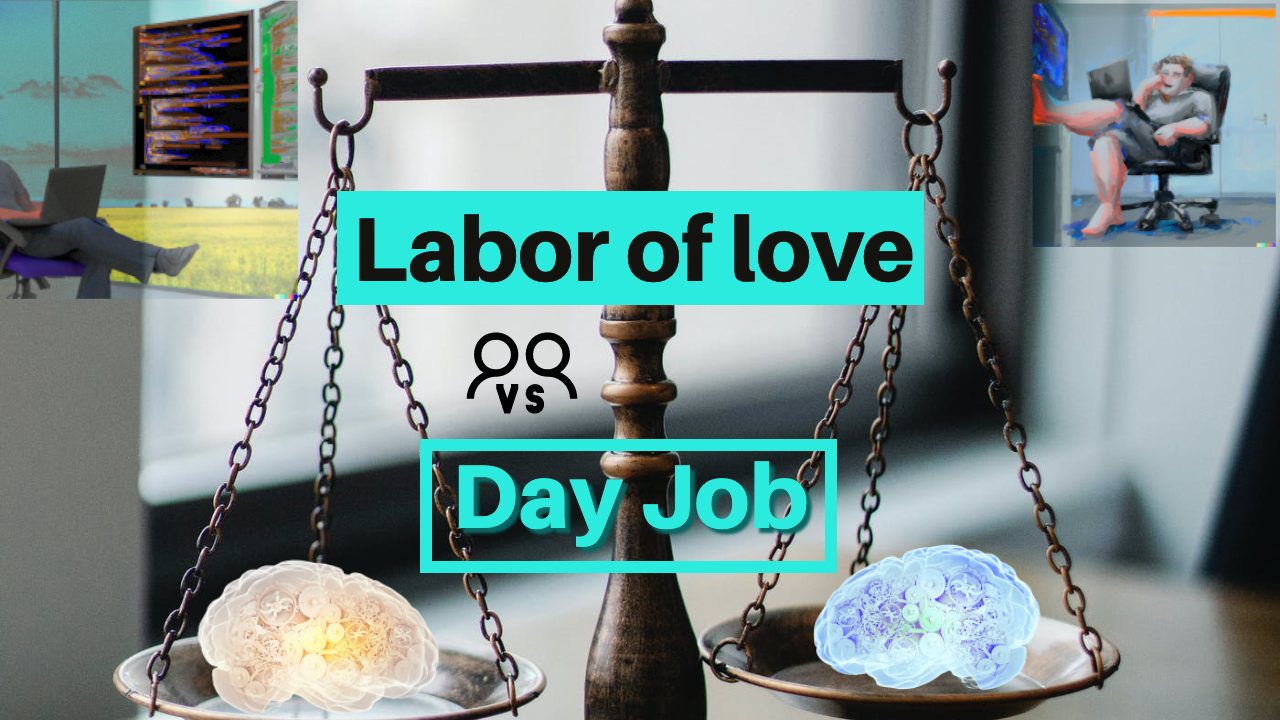What is LinkedIn really good for?

I’d like to share a daring experiment on LinkedIn with you. I hope that you will find this read both insightful and humorous. Here is some information on how LinkedIn works as a community and a platform. So, this is for people who care about LinkedIn in their lives.
Importantly, I only publish on my own GitHub blog these days. But I will make this article available in full on LinkedIn — for obvious reasons.
Lead-in to LinkedIn
This story begins years ago, sometime at the end of 2021. Meet Joe Random Hacker, a friend of mine and another founder who specializes in computer security — i.e, he threatens laggards for a living. This was in the wake of the first massive LinkedIn data leak of some 700 million user profiles to the public. Joe and I were visiting at the Northern, one of the oldest hacker cliques in Quebec, Canada. People were complaining about the "uselessness" of LinkedIn to their business endeavors. And it’s true: all of these folks are founders, and practically none of them got any business from LinkedIn — including yours truly. To myself and my closest friends, the platform was completely inconsequential. And then Joe brings up an idea to run an experiment and figure out how LinkedIn really works — and what it’s good for. You see, there are two things that are constant about hackers:
-
Ruthlessly separate that which matters from that which doesn’t.
-
Relentlessly experiment, test, probe, and iterate — get to the bottom of it.
We tug on things, and that’s how we move the world forward.
By that time, everyone had the data.
A cracker named toorgib (marketing handle God User) was trying to sell it on Tor — incompetently, I may add.
And a Russian cracker group in Budapest kept tugging on LinkedIn for more and more PII — rather successfully.
The company was owned by the most incompetent corporation in the world, practically the definition of a "security vulnerability."
Instead of trying to patch poor API design, everything was swept under the rug, and everyone still yapping got gagged with a wad of cash.
This created a safe haven for experimentation on the Tor data drops and an insatiable market for LinkedIn user data.
Of course, LinkedIn was the talk of the floor at the Northern. Best of all — none of this was illegal.
You see, crackers are criminals, and hackers never stoop down to their level — that’s taboo and an instant exclusion. Hackers are opportunists, not criminals, and there’s a thin line between the two. Thus, everyone was very careful to not talk about this in public outside of the clique. Though legal, morally this experimentation may still be on shaky ground.
First things first — hardcore analytics on the static data. Someone you may know of provided an MLOps platform and initial models for classification discovery. The AI platform chose a classification schema based on the personality traits of the users. And this is the value I can share with you today.
Note that I write hacker-culture-specific terms in parentheses, like so (crackers, hackers, muggles, etc.)
And The Jargon File is available at CatB over http for your perusal.
People who Don’t Matter on LinkedIn
- The Wizard (
hackers) -
Behavior: Posts deeply insightful, countercultural takes, but rarely performs for engagement.
Tactic: Truth over optics, pushes people to think.
Typical goal: Authentic reach, maybe influence — but hates the game.
Subtypes: Indie hackers, ethical coaches, polymaths.
This is yours truly and the bulk of the Northern community.
- The Lurker (
random) -
Behavior: Never posts, occasionally likes, reads everything.
Tactic: Pure consumption. May still be high-value (execs, real clients).
Typical goal: Private intel or hiring info.
Some of the most respected founders we know fall into this category.
- The Corporate Zombie (
muggle) -
Behavior: Automated job title updates, anniversary posts, or weirdly formal jargon.
Tactic: Nothing. Just drifting.
Typical goal: None. They’re trapped.
People who Thrive on LinkedIn
- The Sycophant (
suits) -
Behavior: Constant praise, reacts to trends with empty "Love this!" or "So inspiring!"
Tactic: Upvotes their way into visibility, often tagging influencers for proximity exposure.
Typical goal: Get noticed by recruiters, not clients.
Subtypes: Corporate ladder climbers, HR cosplayers. - The Hustler (
posers) -
Behavior: "10x this, $0 to $1M that," posts daily wins, offers vague consulting, growth hacks, or "success playbooks."
Tactic: Performative success to capture leads.
Typical goal: Sell digital products or coaching.
Subtypes: SaaS growth bros, lost solopreneurs, startup flippers, personal coaches. - The Content Farmer (
freaks) -
Behavior: Reposts news or tweets with no added value, or uses AI-generated "wisdom."
Tactic: Volume over depth. Bots help boost early impressions.
Typical goal: Audience building for newsletter/Substack/course pipeline. - The Ninja/Recruiter (
leechers) -
Behavior: Slides into DMs with roles that don’t match your skill set.
Tactic: Spray and pray.
Typical goal: Commission. We’re a commodity to them. - The Troll/Contrarian (
trolls) -
Behavior: Comments to argue, "Well actually …" experts, LinkedIn edgelords.
Tactic: Provocation, confrontational, or evocative for attention.
Typical goal: Visibility. Real value never understood by us or AI.
Analytics model offered a couple dozen more classifications, but that’s not important to our story. I also checked with several modern chat bots before writing: this short list is good enough for us.
The Experiment
The real experiment began in 2024, and there were only four of us. I carefully offered a part to a fifth person — a hacker friend who worked in recruiting for years, so he would have had a better perspective. But he’d not touch this with a long pole. So we set off with only four categories.
-
suit: (1) The Sycophant — Joe: Scenario Set 1
-
poser: (2) The Hustler — John: Scenario Set 2
-
freak: (3) The Content Farmer — David: Scenario Set 3
-
leech: (4) The Ninja/Recruiter — MISSING
-
zero: (5) The Wizard — Yours Truly: CONTROL SET 1
Now we need a few words about our hacker friends.
Joe, the one you already met, is a bit of a natural troll with about 2,000 connections.
John is a founder from the Midwest and is naturally a random with 300 connections.
David is a founder from Prague and is naturally a muggle with 1,000 connections.
leech never joined. And yours truly was naturally a random, working up to muggle, with 500 connections.
What’s the Big Idea?
All of the hackers wanted to get rid of their LinkedIn accounts.
Not because it’s a point of disrespect between founders — though it may be — but because there was simply no use for it.
And I wanted to keep mine, because I coach engineering competence for Corporate America and actually need LinkedIn presence, even at a Lurker level.
That’s how I ended up with the zero job.
We would aggressively work up to our designated personality type and use our shared ML analytics model to assess our progress relative to the LinkedIn community baseline. That baseline, of course, comes from the ongoing scrape available for free in the Prague Zero community (not to be confused with my role). From this collective experience, we could then publish a study at the Northern on the practical use of LinkedIn by hackers.
The experiment would run one year.
That should get some LOLs. Or so we thought.
The Test Fixture
zerorunway-
I would start publishing. And I would publish real, hardcore stories from the scene. This would still be considered baseline, because preliminary analysis showed that truthful and deep content was a negative gain on LinkedIn. I also made a few mildly controversial posts based on touchy work my MLOps platform is used on by research companies. And I posted a few more that were personal and unconvincing — simulated introspection, personal growth.
leechrunway-
This is the role I truly wish we had for completeness. But alas.
freakrunway, the Content Farmer-
David had his work cut out for him. Obviously, he didn’t want to generate a ton of lame content by hand. He also needed a final objective to keep him on track — like a course pipeline — which he chose. Quickly, LLMs and his own great coding skills came to the rescue. He published on everything from kittens to toilet lids, profusely. He gradually increased volume and frequency as he went.
poserrunway, the Hustler-
John was not into sales one bit. He got the short end of the stick between us. But this was good for him — he learned sales and marketing. Which he could use in his own business, should he choose to expand from µSaaS. He conjured a product he would actually build and sell — a mobile dieting app. Unlike
freak, his expansion needed to follow a well-defined and focused path. Half a year went by before he got a good handle on this scenario set. suitrunway, the Sycophant-
If you recall, Joe is a natural
troll. Now he had to get “nice” instead of “naughty.” His challenge was personal. So, instead, Joe built an application — a serious webapp by year-end. It used the LinkedIn API to post automatically for him. He monitored results via a GCP-hosted dashboard and adjusted accordingly. He ended up being the least engaged of us all. But he loved it — it was coding and designing, his sweet spot. Now he’s thinking of turning it into a SaaS: something like “@$$-lick-2.0.”
General Results
The outcome of this experiment was not what we expected. I’ll go over the scenarios one by one. But keep in mind — LinkedIn isn’t just a platform. It’s a living, changing, evolving community. Run this experiment again, and we may see different results.
zerorunway, yours truly-
My experience was … lame. Despite sincere effort, nothing much changed. Nobody wanted to read my hard-earned babble. Even edge posts — like simulating political behavior — only gained a few likes. Turns out, a hacker’s natural behavior doesn’t move the needle on a social platform.
freakrunway, the Content Farmer-
David’s follower count exploded by an order of magnitude. He received many impressions on practically everything he posted. But his engagement stayed low. He didn’t get much business for his course pipeline. It was a bust! But not because it doesn’t work — it does. What was missing: closing the funnel with a captivating call to action.
poserrunway, the Hustler-
John had a lot of impressions for the product. He got a few thousand customers to buy his app. But it was very little compared to what he gets from regular marketing. He was closing — unlike David — but the ROI just wasn’t there.
suitrunway, the Sycophant-
Joe. Oh Joe, let me tell you — sneaky rat! He refused to delete his LinkedIn in the end. He didn’t sell, pitch, or even work for it. Yet his community grew so large that a single redirect to his webinar scored a ton of money. He made real connections. Tugging on posts — even automatically — earned him “cool points” and capital. He befriended CEOs without knowing, then found out on his dashboard later.
Joe didn’t even care about our experiment.
A troll and a suit rarely share a room.
But somehow, it worked.
One question I’ve never answered: how does he keep those friends after they figure out who he really is?
But he does. At least for now.
Conclusion
This didn’t turn out to be an experiment on a social platform. It became an experiment on human nature. Now Joe walks around all smug, repeating:
"You get more flies with honey than with crap."
But what do you think? So — what have we really learned from this experiment?


Leave a comment